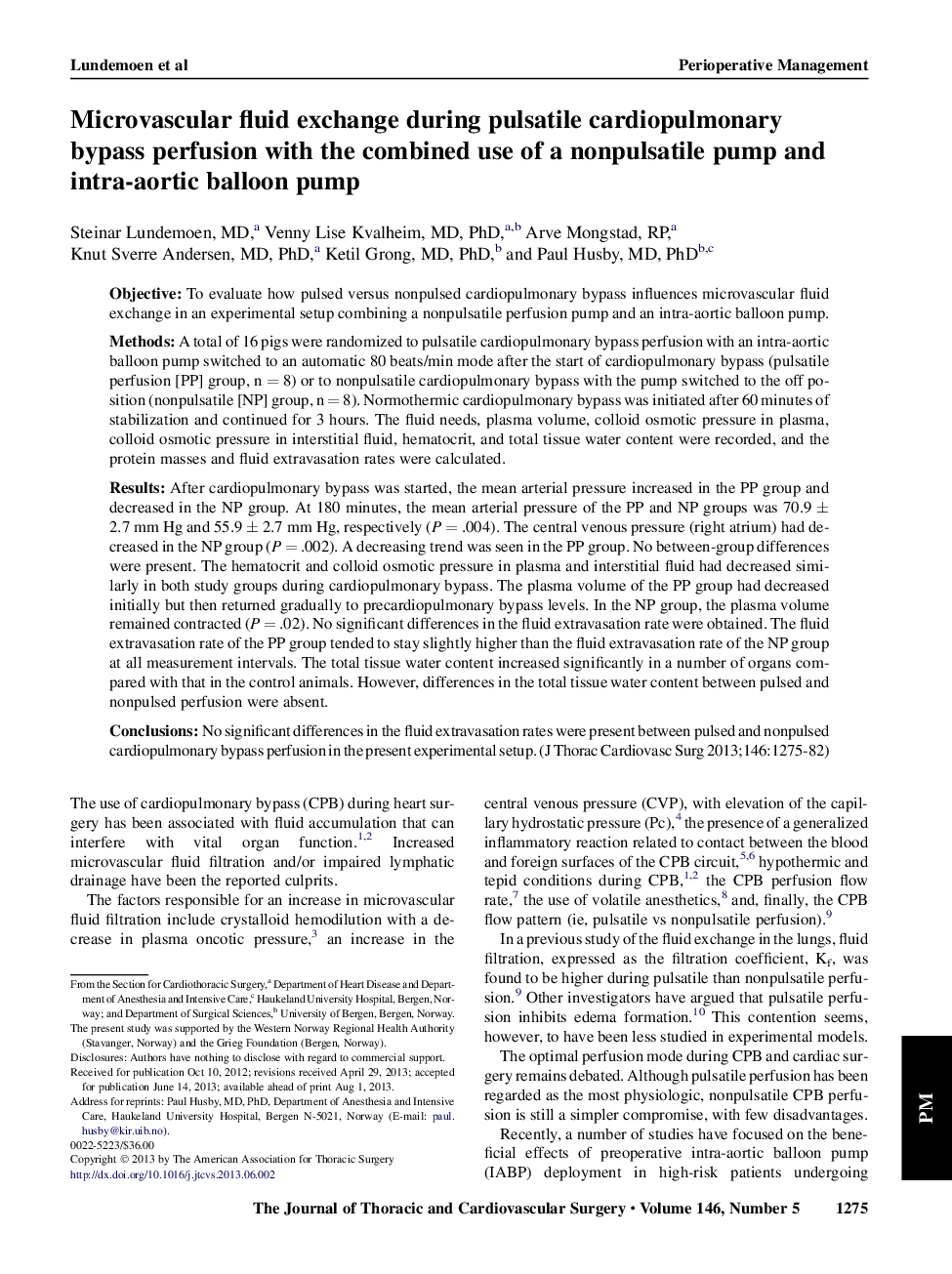| کد مقاله | کد نشریه | سال انتشار | مقاله انگلیسی | نسخه تمام متن |
|---|---|---|---|---|
| 2979862 | 1578617 | 2013 | 8 صفحه PDF | دانلود رایگان |

ObjectiveTo evaluate how pulsed versus nonpulsed cardiopulmonary bypass influences microvascular fluid exchange in an experimental setup combining a nonpulsatile perfusion pump and an intra-aortic balloon pump.MethodsA total of 16 pigs were randomized to pulsatile cardiopulmonary bypass perfusion with an intra-aortic balloon pump switched to an automatic 80 beats/min mode after the start of cardiopulmonary bypass (pulsatile perfusion [PP] group, n = 8) or to nonpulsatile cardiopulmonary bypass with the pump switched to the off position (nonpulsatile [NP] group, n = 8). Normothermic cardiopulmonary bypass was initiated after 60 minutes of stabilization and continued for 3 hours. The fluid needs, plasma volume, colloid osmotic pressure in plasma, colloid osmotic pressure in interstitial fluid, hematocrit, and total tissue water content were recorded, and the protein masses and fluid extravasation rates were calculated.ResultsAfter cardiopulmonary bypass was started, the mean arterial pressure increased in the PP group and decreased in the NP group. At 180 minutes, the mean arterial pressure of the PP and NP groups was 70.9 ± 2.7 mm Hg and 55.9 ± 2.7 mm Hg, respectively (P = .004). The central venous pressure (right atrium) had decreased in the NP group (P = .002). A decreasing trend was seen in the PP group. No between-group differences were present. The hematocrit and colloid osmotic pressure in plasma and interstitial fluid had decreased similarly in both study groups during cardiopulmonary bypass. The plasma volume of the PP group had decreased initially but then returned gradually to precardiopulmonary bypass levels. In the NP group, the plasma volume remained contracted (P = .02). No significant differences in the fluid extravasation rate were obtained. The fluid extravasation rate of the PP group tended to stay slightly higher than the fluid extravasation rate of the NP group at all measurement intervals. The total tissue water content increased significantly in a number of organs compared with that in the control animals. However, differences in the total tissue water content between pulsed and nonpulsed perfusion were absent.ConclusionsNo significant differences in the fluid extravasation rates were present between pulsed and nonpulsed cardiopulmonary bypass perfusion in the present experimental setup.
Journal: The Journal of Thoracic and Cardiovascular Surgery - Volume 146, Issue 5, November 2013, Pages 1275–1282